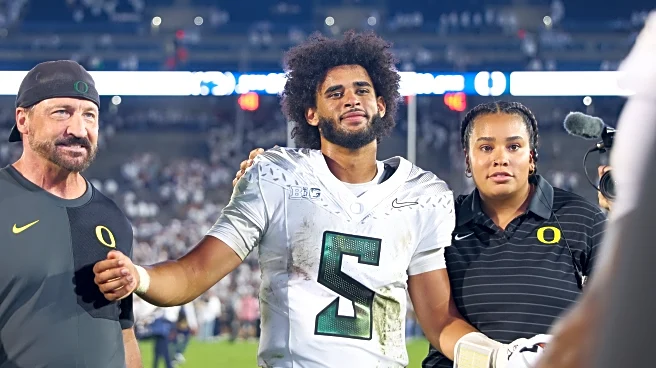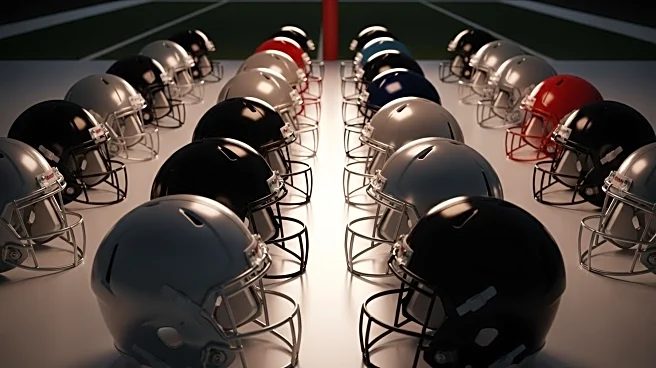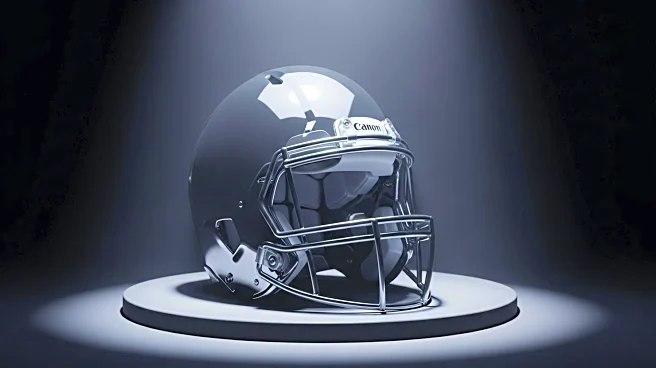What's Happening?
Dante Moore, a quarterback for Oregon, has emerged as the second-best quarterback in the 2026 NFL Draft after a strong start during his first year as a full-time starter. Initially, Moore was a 5-star recruit who began his collegiate career at UCLA but transferred to Oregon, where he sat behind Dillon Gabriel. Now, as a starter, Moore is completing 74.6 percent of his passes with a 14-to-1 touchdown-to-interception ratio. His performance has outshined other quarterbacks initially viewed as first-round possibilities, such as Texas' Arch Manning and Penn State's Drew Allar, who have not met expectations. Moore's quick release, athletic ability, and maturity have been highlighted as key attributes contributing to his rise in draft rankings.
Why It's Important?
Moore's ascent in the draft rankings is significant for several reasons. It highlights the dynamic nature of collegiate football, where initial expectations can shift rapidly based on performance. For NFL teams, Moore's rise offers a promising prospect with a strong arm and leadership qualities, potentially impacting team strategies for the upcoming draft. His success also underscores the importance of adaptability and perseverance in collegiate sports, as Moore's transfer and subsequent development at Oregon have been pivotal to his current standing. This development could influence other players considering transfers as a means to enhance their careers.
What's Next?
As the collegiate season progresses, Moore's performance will continue to be scrutinized by NFL scouts and analysts. His ability to maintain or improve his current form will be crucial in solidifying his position as a top draft pick. Additionally, other quarterbacks in the draft class will aim to improve their performances to challenge Moore's standing. The upcoming games will be critical for Moore to demonstrate consistency and resilience, potentially affecting his draft stock and future career in the NFL.
Beyond the Headlines
Moore's rise also reflects broader trends in college football, where player mobility and strategic transfers are becoming more common. This shift could lead to changes in how college programs recruit and develop talent, emphasizing flexibility and player development. Furthermore, Moore's story may inspire other young athletes to pursue opportunities that align with their growth and career aspirations, potentially reshaping the landscape of college sports.











